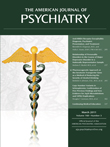Antipsychotic Trials in Schizophrenia: The CATIE Project
It is probably difficult to find a practicing psychiatrist who has not heard of the Clinical Antipsychotics Trials of Intervention Effectiveness (CATIE). The results of this large, publicly funded study have been disseminated by many mechanisms and through multiple channels. In fact, one might say CATIE has been viewed through so many lenses by so many people that its message to the mental health community has become diffuse and imprecise. This compact volume, edited by the two investigators who know CATIE best, is an effort to compile as complete and accurate a record of the schizophrenia arm of the study as possible. Although studies based on CATIE data continue to be published, the book reads in many ways like an epilogue to the study. The authors describe and define CATIE the way they would like it to be known. The Introduction to the volume includes two statements that capture much of this thrust: “Despite the chorus of comments and criticisms, we never doubted the soundness of the methodology or the accuracy of the results of the CATIE study,” and “the major reason we believe that the CATIE study has become so controversial and such a lightning rod for criticism is because it essentially delivered the unwelcome news that the new drugs were not as great as they had been made out to be and we had thought” (p. xvi).
The book is organized into 17 chapters, opening with study design and statistics, next describing the primary outcome analyses, then systematically moving through many domains of the study such as cost-effectiveness, psychosocial functioning, neurocognition, vocational and family outcomes, side effects, substance use, violence, and population pharmacokinetics, and concluding with implications for research design and practice and policy. True to the goal of representing something akin to an official record of CATIE, each chapter is complete and self-contained, including a brief overview of the relevant literature, study design and methods, results, and conclusions. Several chapters include data not published in the original articles on the given topic. Despite the large number of contributors to the volume, the format, tenor, and quality of the chapters are uniform. The only exception, perhaps unavoidable, is the chapter on genetic investigations, which appears incomplete and already outdated (i.e., there is barely a mention of the current lively debates around the relative contributions of common polymorphisms versus rare copy number variations to the pathogenesis of schizophrenia). There were two exceptions to the commendable effort at presenting thorough and complete information about CATIE: a list of members who served on the several CATIE-related committees (e.g., the Schizophrenia Protocol Development and Ancillary Study Committees) and the funds spent on CATIE (and perhaps some detail of how the monies were spent), both of which would have been nice to see in this volume.
If there is a central theme to the volume, it is certainly the performance of perphenazine as comparable to second-generation antipsychotics in most respects and as superior in others (e.g., cost-benefit analyses). That moderate doses of a mid-potency first-generation antipsychotic could perform this well was certainly a surprising outcome for the authors and for many others. The editors emphasize the perphenazine findings in the introductory and concluding chapters as one of CATIE's major contributions. Other findings, including the superiority of olanzapine in the primary outcome variable of time to all-cause treatment discontinuation, are given their due, but it is indeed remarkable to read chapter after chapter about perphenazine's performance, including in unexpected domains such as neurocognition and violence reduction. One can develop alternative explanations for the findings in any given chapter, but the volume as a whole gives a clear message: perphenazine as used in CATIE is an excellent therapeutic option for patients with schizophrenia. In fact, one wonders on the basis of these data why perphenazine is not featured more prominently in current treatment algorithms for schizophrenia.
As a coda to the monumental effort that was CATIE, the last two chapters of the book are fitting; they are well organized, frank, and thought-provoking. The authors make many excellent points about what we have learned from CATIE. Ultimately, however, I was disappointed in the absence of an even wider ranging discussion: CATIE was intended to address “the efficacy-effectiveness gap” (p. 2). So how did it fare in this arena? Has CATIE improved the care of typical patients with schizophrenia? There is a difference between revealing that second-generation antipsychotic medications are not the major advance they were once thought to be and developing a scientific basis for optimal real-life use of antipsychotic medications (i.e., bridging the efficacy-effectiveness gap). This volume accomplishes the former task but not the latter. If anyone is positioned to point the way for meaningful improvements in antipsychotic pharmacotherapy, it is the CATIE investigators. Therefore, I wish the authors were more forceful about what they feel needs to be done and that they had provided a rallying cry for improving the care of our patients. All in all, I believe most readers will finish this book asking for more!



